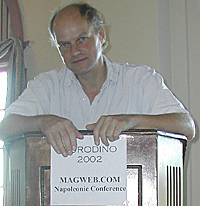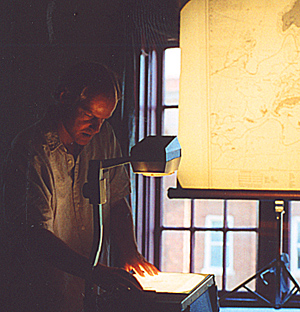 In many ways, Napoleon was completely ignorant of the consequences of his decision to invade Russia, for this endeavor would be nothing like any of his other campaigns. And all of this could be traced down to six crucial variables that were outside his normal operating parameters: weather, distances, terrain, population, army size, and time.
In many ways, Napoleon was completely ignorant of the consequences of his decision to invade Russia, for this endeavor would be nothing like any of his other campaigns. And all of this could be traced down to six crucial variables that were outside his normal operating parameters: weather, distances, terrain, population, army size, and time.
To prepare, Napoleon set about increasing the size of the Grande Armee. Infantry regiments soon became brigade sized as they increased to three, four, and five battalions each. Similar increases were apparent in the cavalry and artillery. Corps became army sized. For example, Davout's I Corp was 72,000 men.
Napoleon's army included 445,000 first line troops, of which 218,000 accompanied Napoleon in the central component. These were all basically moving along one road. Here's where the adage of "the larger the force, the greater the attrition" comes into play, and Zucker pointed to the famous six-dimension chart that showed the wastage of the army. French re-inforcements were basically nil -- Victor's Corp and some Neopolitan units.
Napoleon expects to fight the Russian Army at the border, but the Russians are retreating. They will not fight until their two Armies of the West unit, and Napoleon is desperately trying to drive a wedge between them using the central position and force a battle.
 He keeps to Vilna at the start of the campaign, not with the spearpoints of the army heading towards Smolensk. Why? Because he is setting up a military government and administration in Lithuania. The French, after all, intend to stay after the campaign. Here again, in prior campaigns it was not necessary to create such an administration.
He keeps to Vilna at the start of the campaign, not with the spearpoints of the army heading towards Smolensk. Why? Because he is setting up a military government and administration in Lithuania. The French, after all, intend to stay after the campaign. Here again, in prior campaigns it was not necessary to create such an administration.
As the French army advanced, it proved necessary to release small garrisons along the way to ensure a line of communications.
By the time of Borodino, the initial 218,000 was down to 100,000, of which 10,000 had been combat losses but the rest lost to garrisons, disease, desertion, and exhaustion. Part of this is because the battles over the years has slowly ground the best away. The army of 1812 was not the quality of 1809 or 1807, and certainly not the same army as 1805.
By July, Napoleon is starting to talk about making Russia a three-year campaign, taking Smolensk in 1812, Moscow in 1813, and St. Petersburg in 1814. Yet he kept marching into Russia, still looking for that decisive battle. It arrived at Borodino.
More Borodino 2002 Napoleonic Conference
- Welcome, Introduction, and the Hotel Chamberlain
Borodino Ballroom
MagWeb.com Napoleonic Speakers Conference
Friday Lecture: Bob Coggins: Napoleonic Unit Frontages and True Linear Scale
Friday Lecture: Frank Chadwick: The Russian Army at Borodino
Friday Lecture: Jean Lochet: Preparation of French Cavalry for Campaign of 1812
Friday Tour: Fort Monroe Casemate Museum
Friday Keynote Lecture: Dr. William J. Gregor: Long Shadow of Napoleon on American Military Planning
Friday Lecture: Jean Lochet: The Attempt to Rebuild the French Cavalry for 1813
Saturday Lecture: Kevin Zucker: The French Army of 1812
Saturday Lecture: Dr. James H. Birdseye: Glory or Shame? The Role of Morale on the Napleonic Battlefield
Saturday Lecture: Dr. George Nafziger: Prelude to 1812: The 1809 Campaign in Poland
Special Guest: Lt. Col. Andrey Pavlov: Deputy Military Attache from the Russian Embassy
Saturday Lecture: Glenn Drover: Napoleonic Game Design and Production
Saturday Lecture: Jean Lochet: The Peace Conference of Prague: Negotiations with Napoleon During the 1813 Armistice
Video Presentation: Dr. Ben Weider: Borodino Re-enactment 1997
Video Presentation: Austerlitz and Sharpe
Re-enactor Presentations: Russians and French
Borodino: The Wargame
Side Wargames: Survivor, et al.
Awards Banquet
Back to List of Conventions
Back to Travel Master List
Back to MagWeb Master List of Magazines
© Copyright 2002 by Coalition Web, Inc.
This article appears in MagWeb (Magazine Web) on the Internet World Wide Web.
Other military history articles and gaming articles are available at http://www.magweb.com